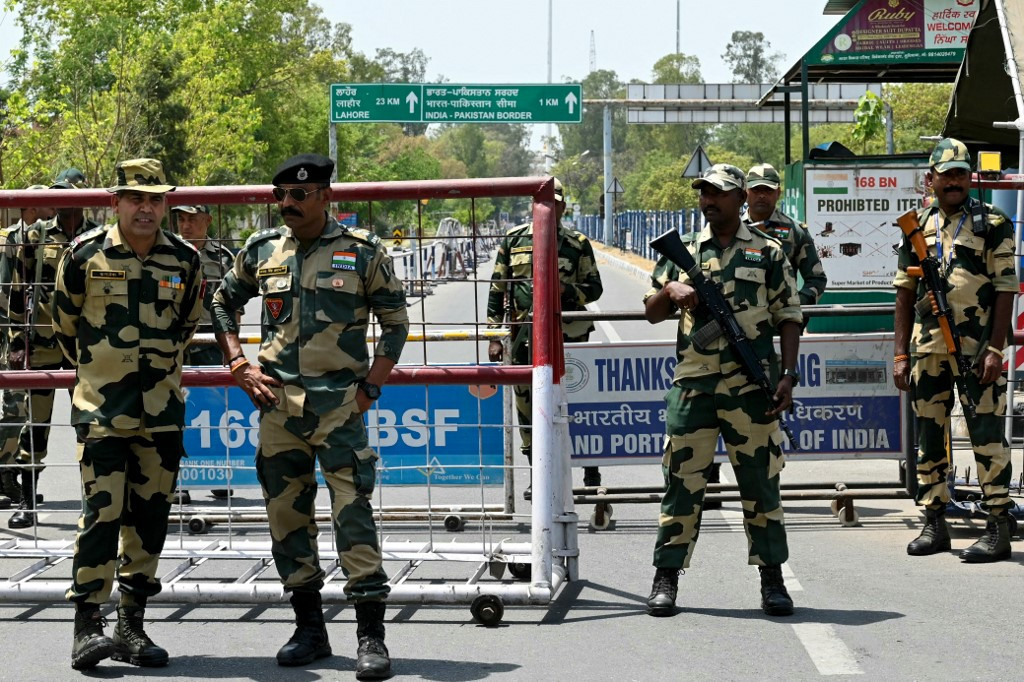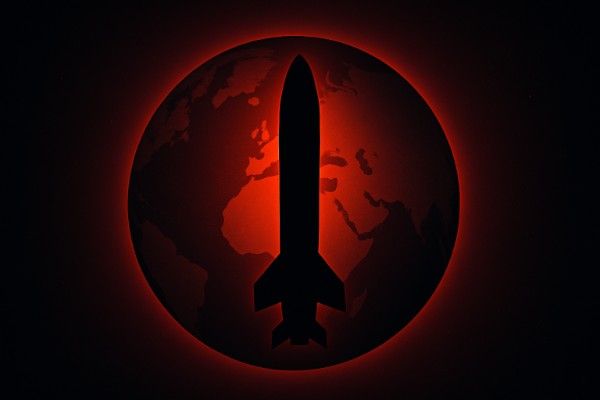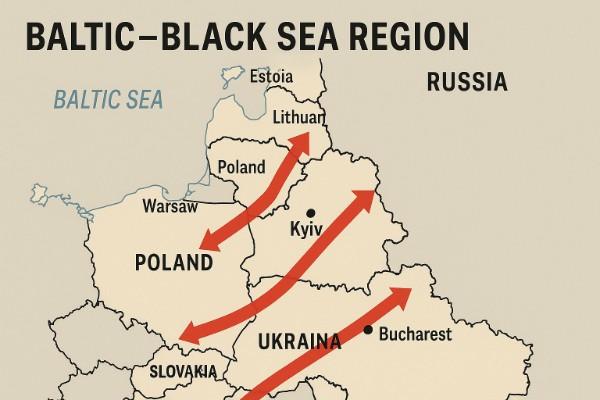In the immediate aftermath of the Pahalgam militant attack on April 22nd, India unilaterally suspended its participation in the Indus Waters Treaty of 1960 while accusing Pakistan of conducting the attack. The weaponization of water emerged as a deeply vexed issue, downgrading the diplomatic ties between the two countries. Pakistan called for a neutral and credible inquiry into the incident, however, India rejected the call for a joint probe.
On 6th May, India launched ‘Operation Sindoor’, targeting nine sites in Pakistan and Pakistan-administered Jammu and Kashmir which India alleges were used to orchestrate the Pahalgam attack, resulting in 26 casualties, including innocent children. In retaliation, Pakistan’s armed forces shot down five Indian Air Force jets, including three French-made Rafale jets as well as an MiG-29 and an SU-30 fighter—a significant blow to India’s aerial capabilities.
A total of 125 fighter planes clashed in an hour-long aerial battle, marking it the ‘largest and longest dogfight’ in recent aviation history. Regardless of the condemnation of its provocative actions, India’s behavior as an incorrigible rogue state against Pakistan persisted, relentlessly. It waged a multidomain campaign that combined kinetic and non-kinetic tactics of warfare. Pakistan demonstrated strategic resilience and neutralized nearly 77 Indian drones that violated its airspace while demonstrating a high level of military preparedness in response to India’s deployment of warships aimed at hitting Karachi port.
Through a system of propaganda networks and narrative engineering, the Indian media ecosystems manufactured a war hysteria. They disseminated fake news, while contravening journalistic rigor with sensationalism. A plethora of fabricated narratives circulated all over mainstream and social media. Indian leaders openly harangued as they descended into war frenzy. Awash with an anti-Pakistan sentiment, such a campaign of misinformation and disinformation reflected a deeper political malaise in Indian society.
On 10th May, Pakistan’s air defense system intercepted India’s ballistic missile attacks on three critical military bases, namely, Nur Khan base, Murid base and Shorkot base. In a befitting response to India’s belligerence, the Director General, Inter-Services Public Relations (ISPR), Ahmed Sharif Chaudhry warned India by stating, “Now you just wait for our response.”
A large-scale and retaliatory military operation codenamed ‘Bunyan al Marsoos’ was subsequently launched against Indian aggression. It involved aerial attacks on multiple Indian military installations and strategic assets including a BrahMos missile storage facility in Beas and the backbone of India’s military infrastructure, the dreaded S-400 air defense system. Pakistan also conducted a cyber offensive which proved detrimental to the adversary’s digital infrastructure, compromising high profile Indian websites and disabling Maharashtra’s power grid system.
After a period of intense hostility, India and Pakistan eventually agreed to a full and immediate ceasefire through U.S. President Donald Trump’s mediation as a primary interlocutor. His announcement received praise and acknowledgement from Pakistan, however, India downplayed it. While President Trump’s diplomatic praise paves the way for a brief detente, nonetheless, it is premature for Pakistan to perceive it as a breakthrough.
The ceasefire itself gets off to a shaky start with reports of numerous violations owing to swarms of drones and loud explosions, raising pertinent questions about its durability. Adding fuel to the fire, India’s Foreign Secretary accused Pakistan of border intrusions and the India Ministry of Information and Broadcasting stated that “no decision to hold talks on any other issue at any other place”, despite U.S. Secretary of State Marco Rubio’s claims that both countries have agreed to engage in bilateral talks over “broad set of issues at a neutral site”, reflecting India’s adamancy.
Throughout this period, Pakistan demonstrated restraint by calibrating proportionate, measured and retributive responses. Pakistan re-established credible deterrence through synergy of all three military branches and employment of niche military technologies and warfare capabilities to augment the effectiveness of real-time situational awareness and multi-domain operations. The military also committed to its ethos by solely targeting the Indian military infrastructure rather than resorting to the reprehensible targeting of civilians in the heinous manner as the enemy did. Pakistan confined its actions to countering aerial incursions, repelling Indian aircrafts transgressing the Line of Control (LOC), neutralizing Indian drones and hitting India’s military installations to deter the aggressor, whose frantic attempts to imperil Pakistan’s security have undeniably gone in vain.
While Article 2(4) of the UN Charter categorically prohibits the use of force against another state, India legitimized breaching Pakistan’s sovereignty and territorial integrity under a ‘counterterrorism’ alibi without credible evidentiary basis. More alarmingly, India’s actions, deemed belligerent reprisals, are also declared unlawful under the ambit of international law. India has also flagrantly violated Article 51 of the UN Charter under the pretext of preemptive deterrence. It did not fulfil the legal condition of exercising its right to self-defense to counter an imminent threat rather than reacting to a mere impulse or suspicion.
The ideological underpinnings of India’s jingoism lie at the heart of Hindutva; a radical hindu ethno-nationalist ideological framework central to India’s ultranationalist milieu and espoused by the Bharatiya Janata Party (BJP) in the Indian polity. It calls for the formation of a unified region with geographical expanse integrating present-day Afghanistan, Bangladesh, Bhutan, India, Maldives, Myanmar, Nepal, Pakistan, Sri Lanka, and Tibet. It underscores the enforcement of an antagonistic and hardline strategy that foments anti-Muslim sentiments by posing Pakistan as an existential threat to the Hindu nation, outling a dogmatic basis for saffron terrorism and a military venture against the Muslim state.
As Hindutva serves as the casus-belli for India’s bellicosity and hegemonic proclivities, Kashmir remains the bone of contention between both countries. There are numerous violent incidents weaponized by India against Pakistan’s global standing, spanning from 2001 till 2019, including the 2001 Indian Parliament attack, the 2008 Mumbai attacks and the Pulwama attack in 2019. India has accused Pakistan of harboring terrorists under political expediency. It has aggravated Pakistan’s diplomatic isolation and used it as a scapegoat in a concerted effort to aggrandize its own sphere of oppressive acts while concealing its heavy-handed militarization in the disputed territory—a move that reeks opportunism.
Contrastingly, India has become notorious for sponsoring terrorism on Pakistan’s soil. In 2016, Kulbhushan Jadhav’s role in financing and supporting militant and insurgent groups to perpetuate subversive activities in Balochistan was an irrefutable proof of India’s involvement in terrorist attacks across various regions of Pakistan. As a political manoeuvre to cripple Pakistan’s economy, India has also doubled down on efforts in lobbying multilateral institutions to evaluate financial support to Pakistan. Similarly, as Pakistan focuses on economic stabilization through fiscal reforms led by the International Monetary Fund (IMF), India seeks to destabilize the country amid economic recovery, especially as the IMF has recently cleared a $1.4 billion loan to Pakistan.
Furthermore, the resurgence of militarism and national fervor against India’s, long-time adversary, Pakistan, has not been ebbed in any perceptible manner during Modi’s regime since it grants him the filip his political party needs to secure landslide electoral wins. This pattern has been consistently observed in the 2014, 2016 and 2019 elections where each election was preceded by a heated escalation with Pakistan as evinced in the 2014 border skirmishes, the 2016 surgical strikes and the 2019 Pulwama-Balakot crisis. Similarly, it stands to reason that the timing of the Operation Sindoor and the upcoming Bihar election is eerily coincidental; proving that the current standoff serves political optics as opposed to security imperatives.
As the barrage of counterstrikes by Pakistan put India on the back foot, Modi’s hubris is now shattered as Pakistan flexes its military muscle while exposing India’s strategic vulnerabilities. Nonetheless, both are bogged down in a dangerous collision course which is inimical to the regional security equilibrium. With such a burgeoning crisis, the spectre of nuclear war looms over the 1.6 billion population. Any strategic miscalculation could lead to a full-scale war between two nations with more than 150 nuclear weapons each. What is more concerning is the fact that even a small-scale war between the two rivals could trigger a catastrophic global famine. The cyclical crises of South Asia also prove that both countries cannot afford prolonged strife.
Nevertheless, Modi’s revanchism is a harbinger of doom. In his latest incendiary speech, he warned that New Dehli would not tolerate ‘nuclear blackmail’ in the event of a conflict and that he has merely ‘paused’ military action against Pakistan. With the fog of war thickening under the nuclear overhang, both the rivals are treading a tightrope. Amid the cascading crisis, it has become imperative that the Butcher of Gujarat’s unbridled and imperialist ambitions to become the Netanyahu of South Asia are curtailed to avert a geopolitical upheaval.

Table of Contents
ToggleZahra Zaman
Zahra Zaman is an undergraduate student majoring in International Relations at the Department of Social Sciences, SZABIST University, Karachi. With a strong interest in International Relations, she aspires to pursue research in areas such as security studies, foreign policy, and diplomacy, employing both comparative and case study approaches to comprehend global politics. She has worked as a Research Intern at the Pakistan Institute of International Affairs and has also contributed to the European Center for Populism Studies.













